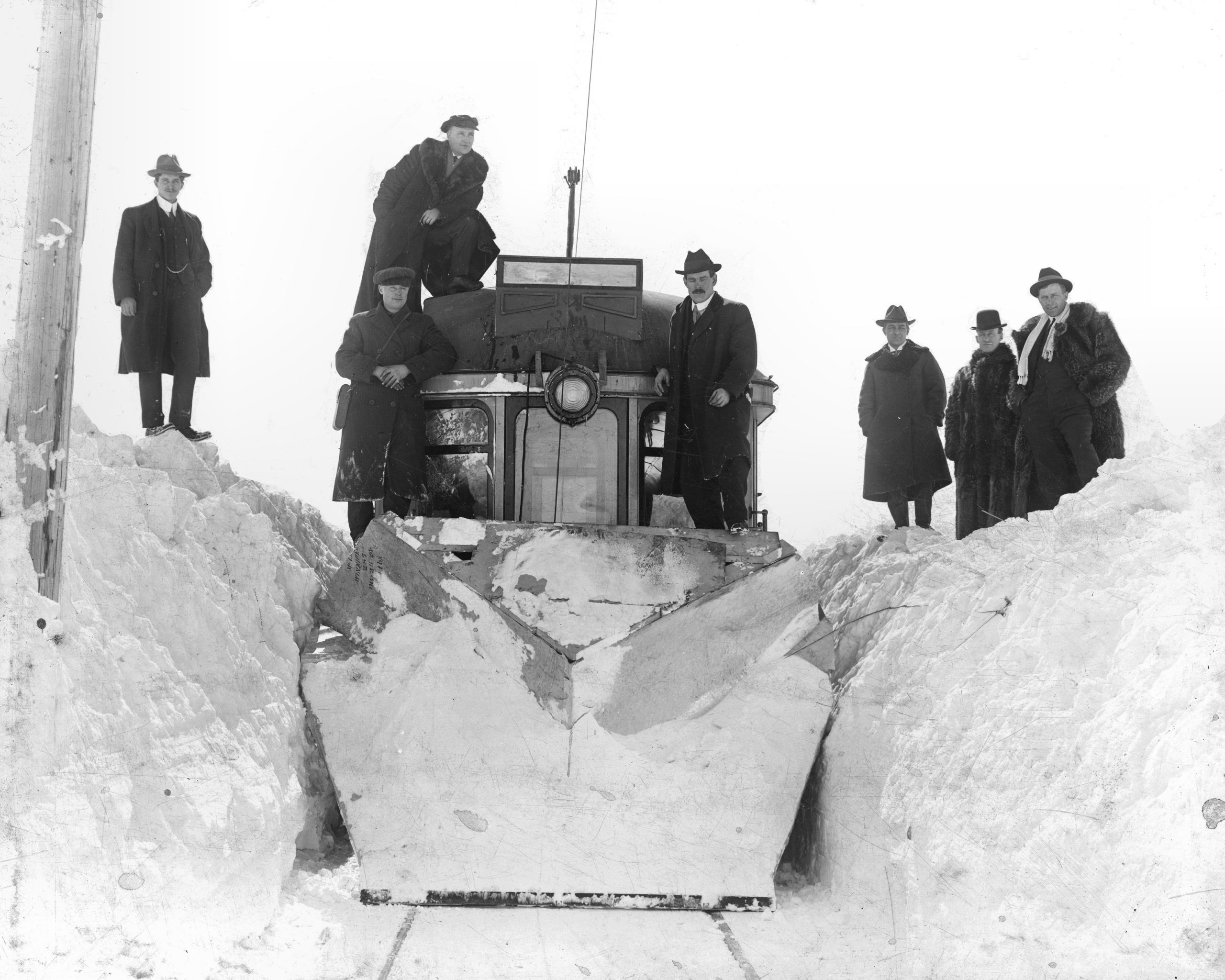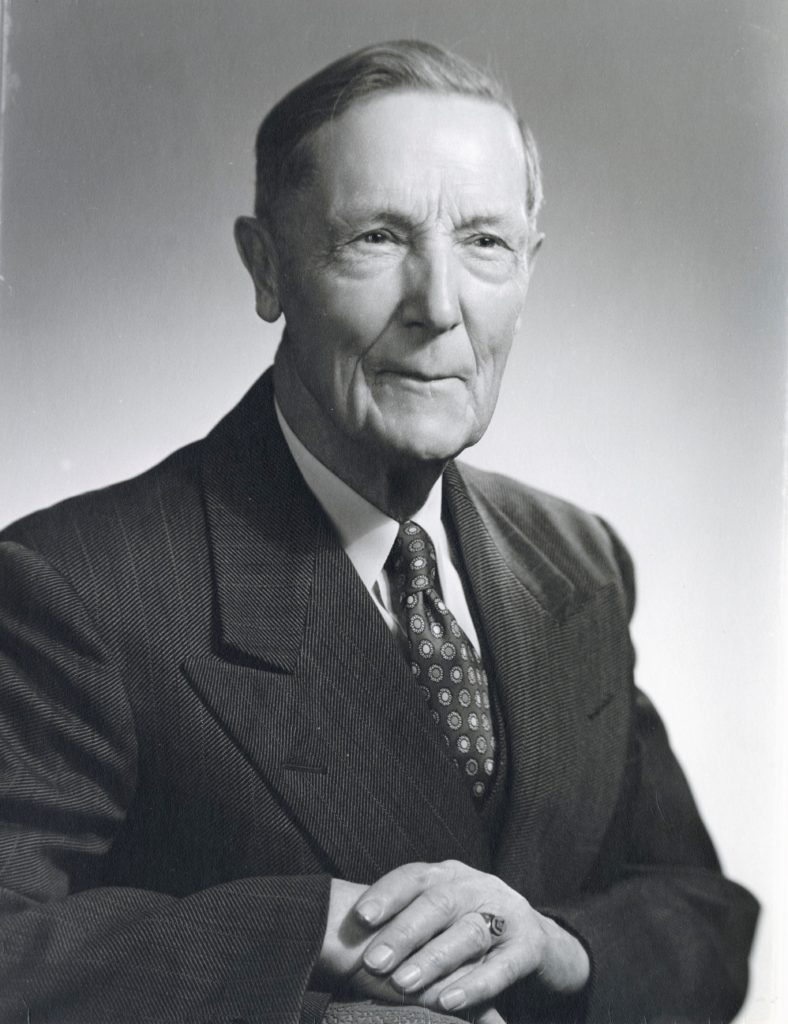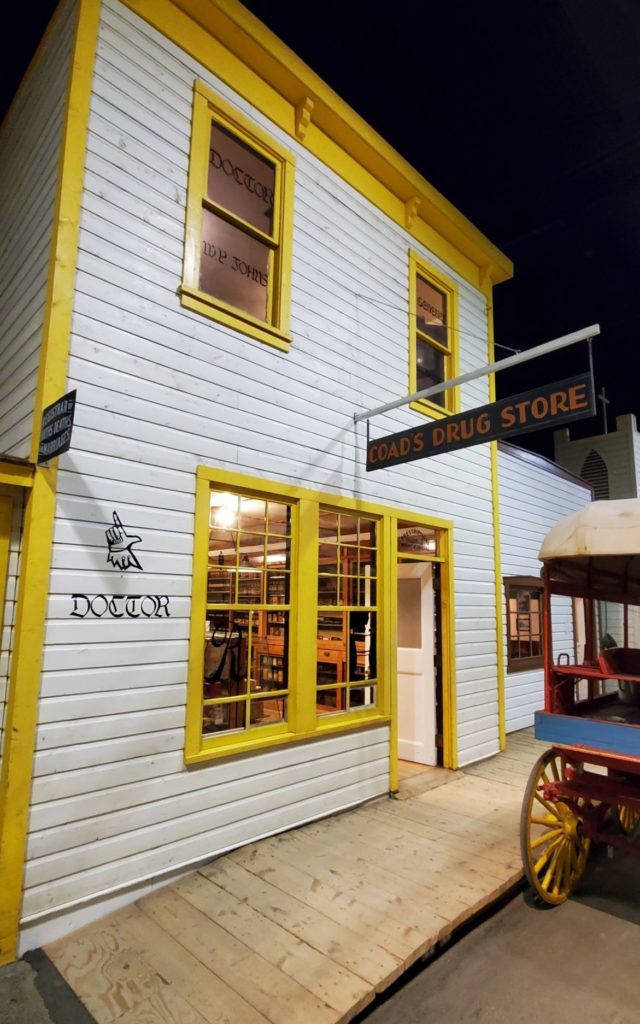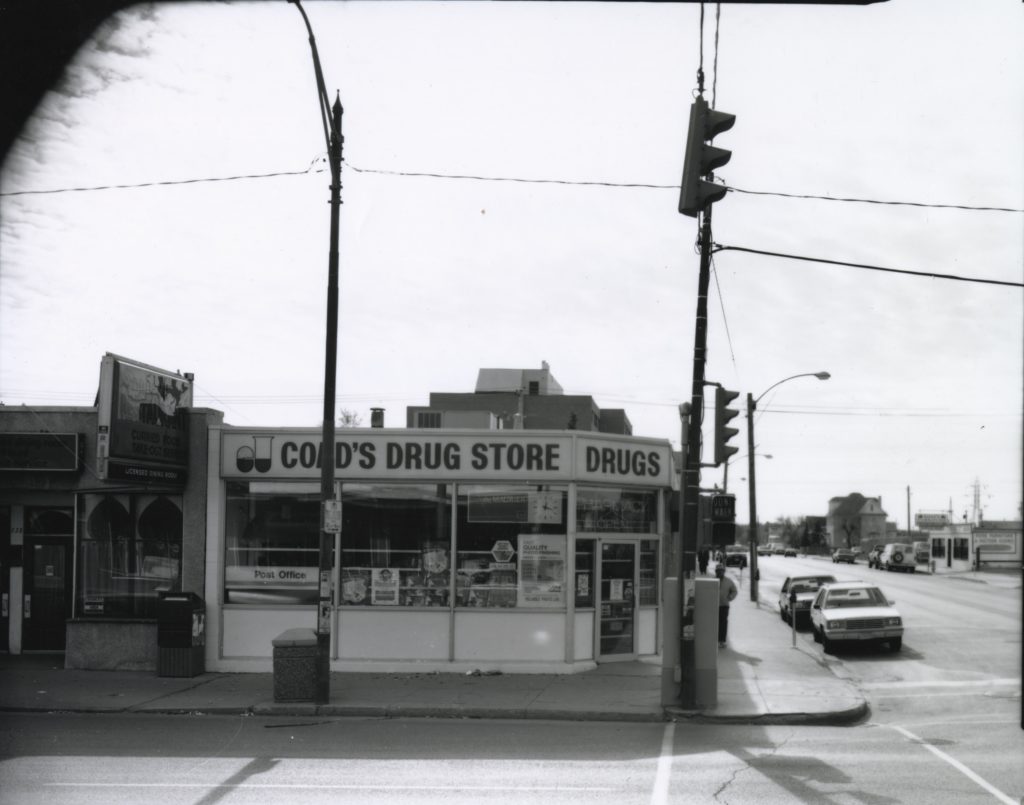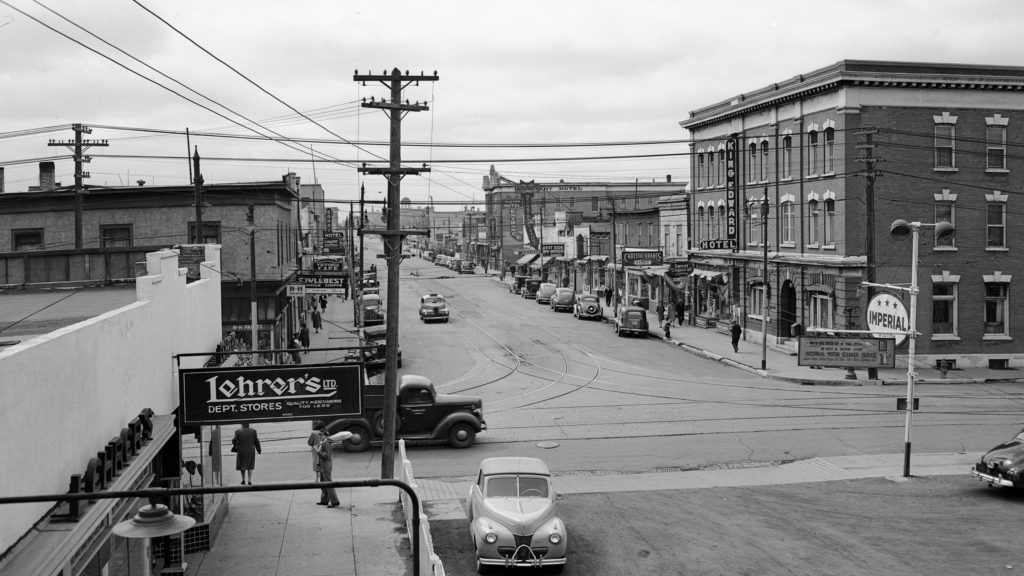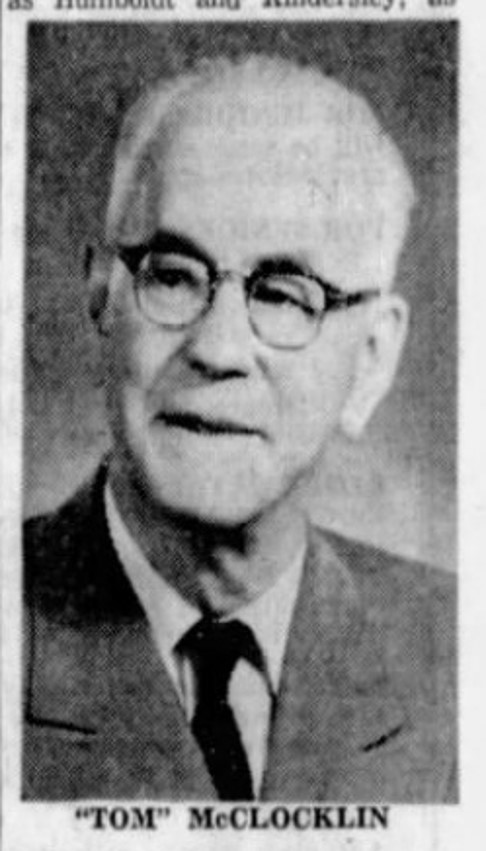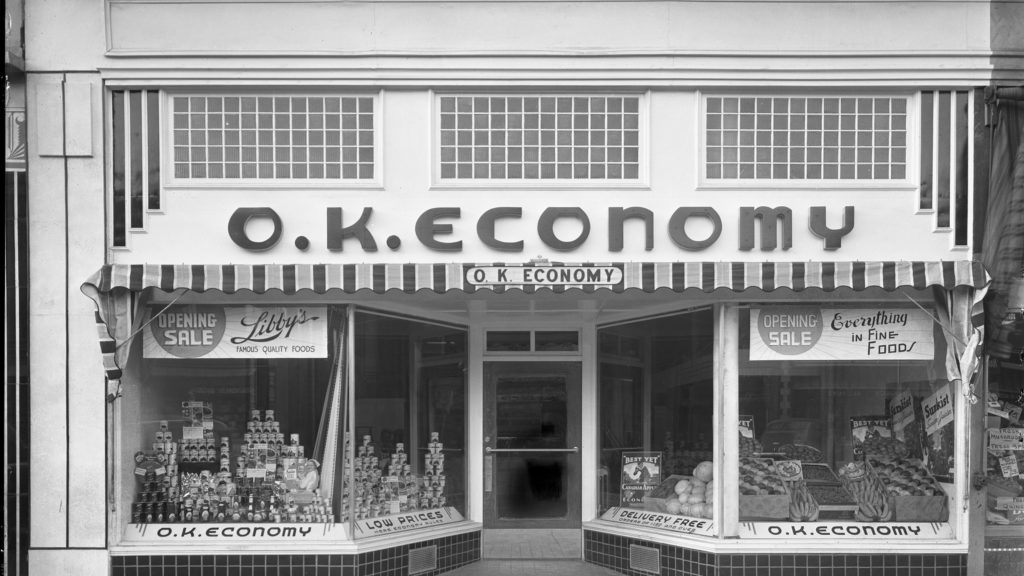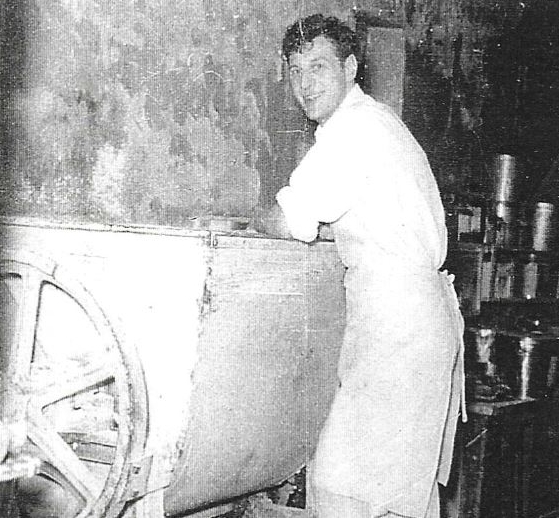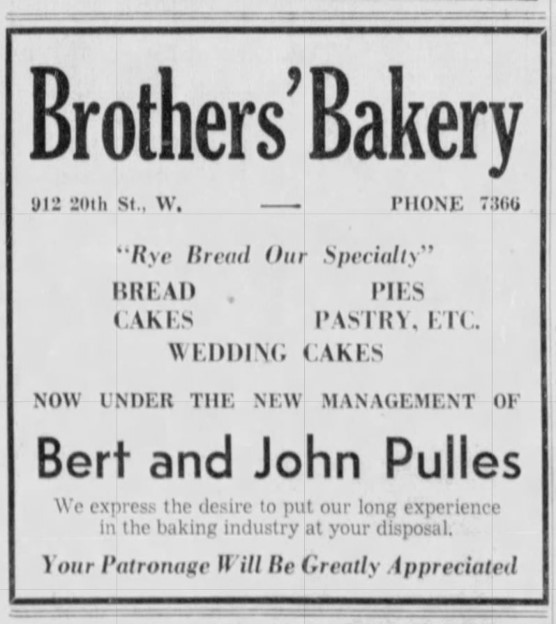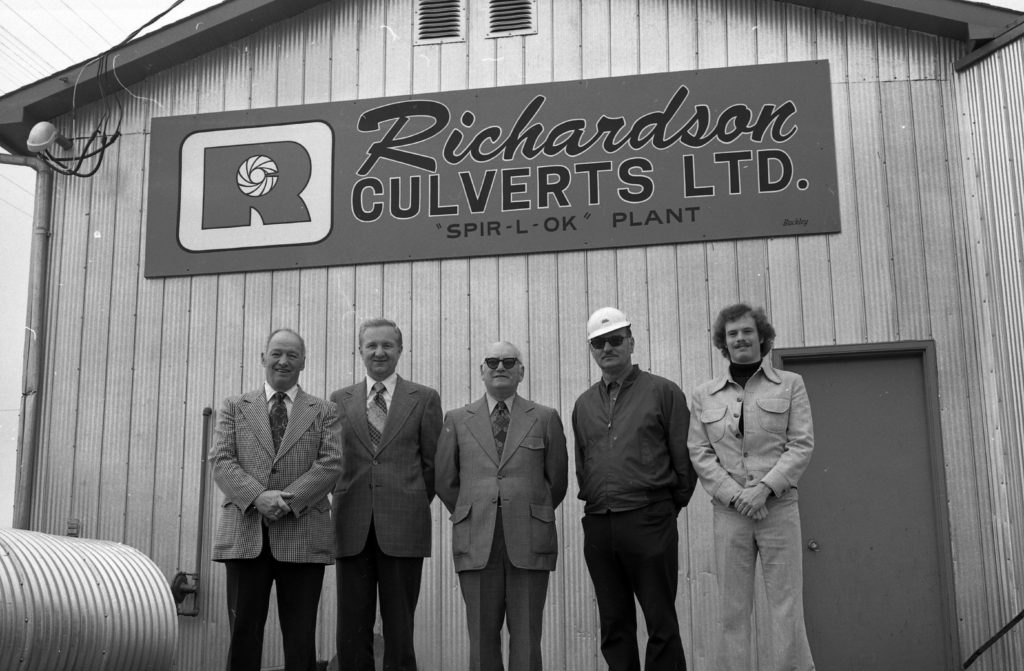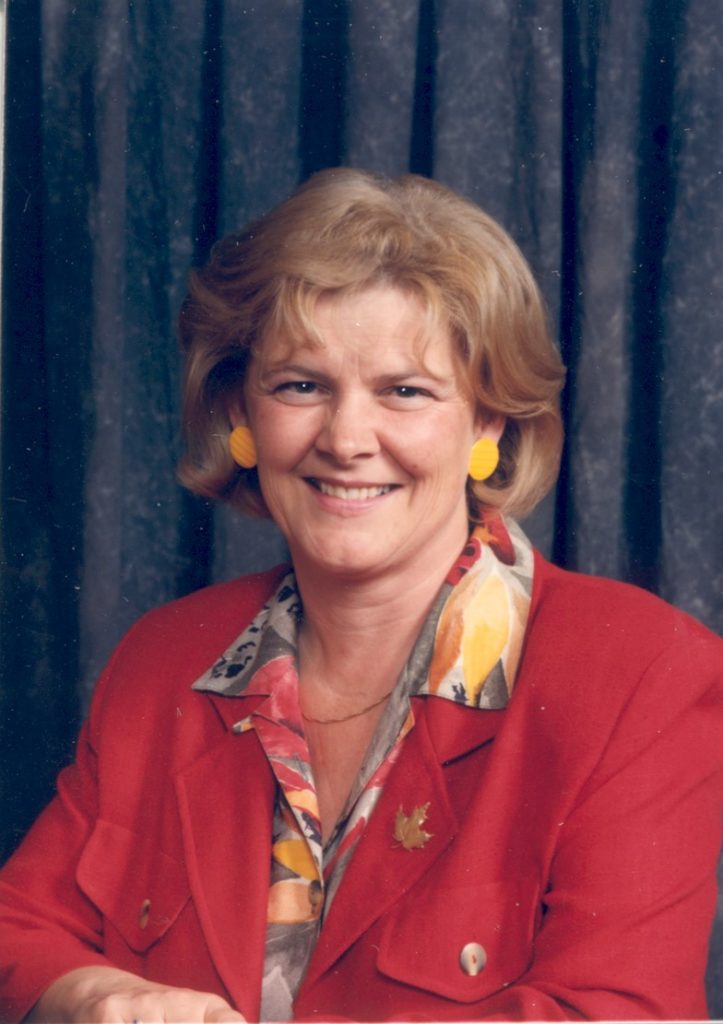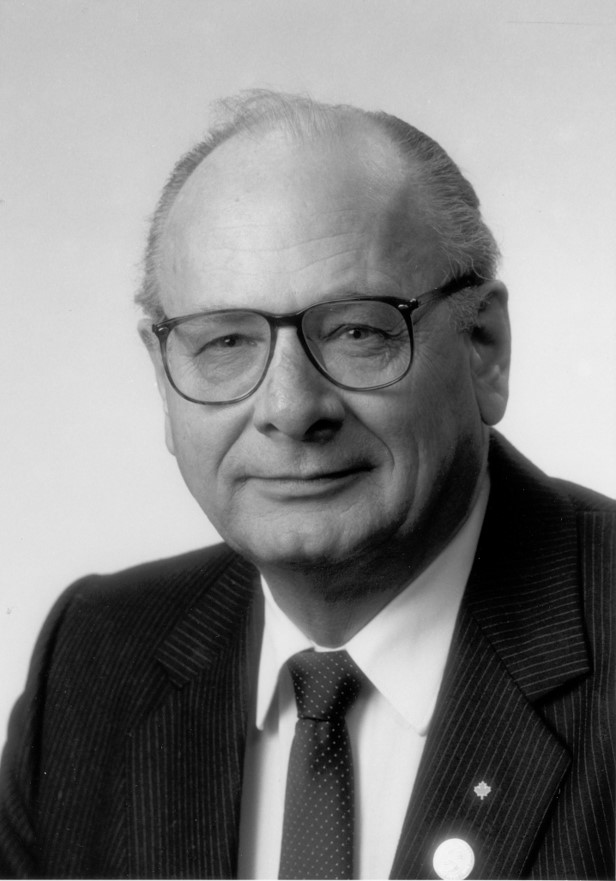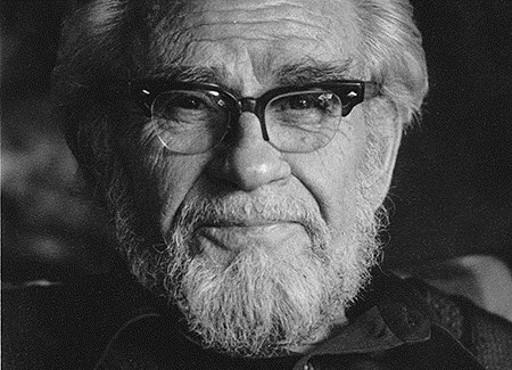Although one of the newer communities in Saskatoon, the idea for a neighbourhood such as Hampton Village goes back to 1913, well over a hundred years ago, when a city commissioner named Christopher Yorath dreamed of this community.
Yorath developed a city expansion plan that was known as the Yorath Plan or The Plan for Greater Saskatoon in 1913. In this plan he proposed a neighbourhood just slightly north of the present Hampton Village and called it “New Hampton Park”.
Yorath thought it was essential for city residents to have easy access to parks and green space. He also thought Saskatoon should have an “encircling road”. He truly was a visionary! Some of Yorath’s neighbourhoods were developed, but the Great War, the Depression, and the Second World War prevented all aspects of its development. But the City of Saskatoon continued to plan for expansions and purchased land as it became available.
The western half of land for the current Hampton Village was annexed on July 10th, 1979, and the eastern half on May 30th, 2000, and on August 14th, 2004, our community was named. The developers proposed the name “Hampton Village” because the current site was so close to the previously proposed “New Hampton Park” and incorporates many of Mr. Yorath’s ideas, particularly the idea of easy access to parks and green space.

Hampton Village was the first suburb developed and designed on Saskatoon’s west side to be modelled after a village concept. This village concept played a role in the selection of some of the street names, which were approved in 2004. The street names were selected because of their relationship to a variety of businesses in Saskatoon, as well as types of businesses that could have been found in early villages.
The parks and community schools in Hampton Village were also named in honour of many notable Saskatonians.
Allwood
- Allwood Crescent
- Allwood Manor
Allwood Crescent & Allwood Manor honours John Pridgeon Allwood. He was born in Sheffield, England and learned his trade of harness maker from his father. John came to Saskatoon in 1906 as a steerage passenger. This meant he looked after some animals on the ship and paid a reduced fare for his passage. The day after he arrived in Saskatoon, he found employment at A. J. Whitfield’s harness and Leather Goods Store on 2nd Avenue South, where he was one of five employees.
He did not find accommodation quite as easily, so he lived in a tent on the riverbank, where he contracted typhoid fever. There was a typhoid epidemic from 1906 to 1909, and hospital resources were stretched to the limit, so many private homes were used to fill the need to care for the sick. John stayed in one of these for seven weeks while he recovered.
Once he was well, he went back to work for Mr. Whitfield for three years. In 1909, he opened his own harness business at 819 Broadway Avenue, but a fire in that building required he relocate his business to 830 Broadway Avenue, where he operated for 45 years before retiring in 1954 at 74 years of age.
In 1909, Nutana consisted of 20 houses, roadside hitching posts, and no sidewalks. The harness business began to decline around 1916 when automobiles became the preferred method of transportation, so John started repairing shoes, sharpening skates, and even repairing leather straps on prosthetic limbs to augment his business.
He was a member of the Grace Methodist Church, sang bass in their choir and played the violin. He was also part of a quartet that traveled to Floral and Clavet to provide special music for services in those communities.
John met his wife on Broadway. Her name was Dorothy Ruth Avery. She had also emigrated from England and worked in a shop a few doors north of the harness shop. They married in 1917 and had one daughter, Jean. Dorothy died in 1950 at age 65. John died on June 6th, 1962, at 82 years of age.
Coad
- Coad Crescent
- Coad Manor
Coad Crescent & Coad Manor honour Percy Howard Coad, a pioneering pharmacist who came to Saskatoon in August 1906. He founded and managed a drugstore for Ed Blain on October 13th, 1906. The store was located at the corner of 20th Street West and Avenue B and was known as “Saskatoon Drug and Stationery”. Mr. Coad managed the store and lived in the back of the store. This was the first pharmacy on the west side of Saskatoon. In 1910, when Mr. Coad decided to stay in Saskatoon, he bought the business and changed its name to “Percy H. Coad, Druggist”. The original building was on site until 1972, at which time it was rebuilt by Peter Coad, Percy’s grandson.
When the renovations took place, some fixtures from the store were acquired by the Western Development Museum, enabling them to build a replica of the original Coad’s Drug Store on Boomtown Street. Today, you can go to the Western Development Museum and peek into his store as it would have appeared in 1910. The store celebrated its 100th anniversary in 2007, but unfortunately closed in 2008.
Dawson
- Dawson Crescent
- Dawson Way
Dawson Crescent & Dawson Way honour Cornelius Dawson, who came to Saskatoon in 1906 at the age of 25. Cornelius (Con), was the first engineer at the Saskatoon Power Plant, which was located on Avenue H South and 11th Street.
He was a pioneer electrical contractor, running his own business from 1917 until his retirement in 1963. Upon retirement, he was honoured with a life membership in the Electrical Contractors Association. After retirement, Mr. Dawson had a farm in Kinley, Sk.
Throughout his life, Mr. Dawson was actively involved in St. Thomas Wesley Church and was a life member of Elks Lodge, serving as Provincial Chaplain.
He and his wife and their six daughters made their home in the apartment above his shop, located at 221 Avenue D North. The brick facade still bears his name and they 1929.
Denham
- Denham Crescent
- Denham Court
- Denham Way
- Denham Place
- Denham Close
- Denham Rise
Joseph Denham was born on May 3rd, 1902, in Sandown, Isle of Wight, England. In 1908, Joseph’s father came with his eight motherless children to Canada and settled near St. Walburg, Saskatchewan. Joseph spent most of his childhood in that area. He came to Saskatoon in 1928 looking for employment. He worked in various jobs as deliveryman, janitor, carpenter, and window cleaner.
In 1938, he started a business out of the basement of his home on Avenue D North. Initially the business specialized in canvas repair and the entire family helped. But, the business soon evolved from simply repairing canvas to manufacturing tents and awnings made from dyed woven cottons. At the outbreak of the Second World War, Denham Awning received the government contract to manufacture canvas bags for students training at Bedford Road Collegiate for the Air Force Training school.
By 1941 Denham Awning needed a bigger space so they moved to 309 33rd Street West. In the 1960s, the business diversified again to include the production of boat tarps. A fire in February of 1971 destroyed the Denham Awning building, but the same year, a new, larger building was built on the same location. The business continued to grow and specialize, and by the 1980s even their new building could not accommodate the equipment required to create the latest type of awnings. In 1986 they moved to an 11,000 sq. ft. building located at 501 45th Street. The family business that started in the basement continues to thrive to this day, and is run by third generation family members.
Geary
- Geary Crescent
- Geary Lane
Michael (Mike) C. Geary. Mike was born in Ireland in 1878. At the time of his passing, on December 24th, 1964, he had lived in Saskatoon for more than 50 years after arriving in Saskatoon in 1905. He was well known in the life insurance field, working for Great West Life, and was Chairman of the Separate School Board for many years. He was also a prominent figure in the Irish Colony in Saskatoon. He, and his friend John A. Stirling, were owners of Geary and Company, Wine, and Spirits Merchants, located at the corner of Avenue B and 20th Street.
Greenfield
- Greenfield Crescent
- Greenfield Terrace
Greenfield Crescent and Greenfield Terrace are named in honour of John (Jack) Greenfield. He was born in Worthing, Sussex, England on May 29th, 1891. As a young man he emigrated to Australia and, in 1913, he moved to Saskatoon. He was employed by the City of Saskatoon for 45 years before retiring in 1959. As a city employee, he delivered water to homes in Saskatoon. In the early days, many homes did not have running water. Residents used a neighbourhood water tap in the summer, but had it delivered in the winter.
When he wasn’t delivering water, John was an active soccer player for the Sons of England Football Team, and he also served as treasurer of this group. He was also well known for his keen interest in gardening and the way he kept the trees trimmed on his property.

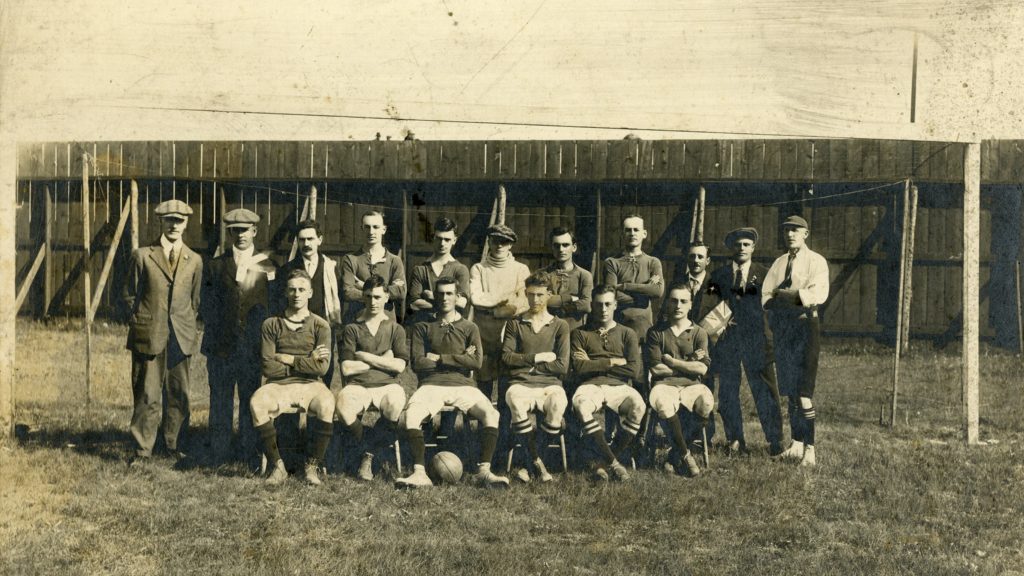

An annual task since the early 1930s for John Greenfield, 901 Ave. F north, has been trimming his maple trees. Mr. Greenfield moved into his house in 1926, planted the trees two years later, and began shaping them about four years after that.
Photo: 4_Sept_1970_p_3_Saskatoon_ Star Phoenix_ page 3 Courtesy of Saskatoon Public Library
Hargreaves
- Hargreaves Crescent
- Hargreaves Lane
- Hargreaves Way
- Hargreaves Manor
- Hargreaves Green
- Hargreaves Court
The Hargreaves streets in the northwestern part of Hampton Village honour Mr. Alfred Hargreaves.
Alfred was born in Briarfield, Lancashire, England in 1886. He immigrated to Canada in 1905 at the age of 19, and came to Saskatoon in 1911 to install the first automatic telephone. In 1912, he started the Western Business Service, which evolved into the A. Hargreaves Company Ltd., Printers and Lithographers.
Mr. Hargreaves served in the First World War with the Canadian Army from 1916 until 1918. He was actively involved in his community as a committed member and President of the Saskatoon Cricket Society for many years. He was also the President of the Saskatoon Amateur Operetta Society for several years. He was involved in the Saskatoon Lawn Bowling Society, the Horticultural Society, and was very interested in early radio, and later, high-fidelity radio.
Henick
- Henick Crescent
- Henick Lane
The Henick series of streets are named in honour of Edward Albert Henick. He was born in Saskatoon on December 10th, 1927, took his schooling in Saskatoon, and joined his brother, Norm, in the family business, Henick Brothers Meats. They ran their business on 20th Street until the 1970s.
Most Hilltop Football fans know Ed Henick because of his involvement in football. He was one of the original members of the Saskatoon Hilltops, playing as an undersized defensive and offensive end in the 1947 and 1948 seasons. Ed served as an assistant coach in 1950 and was the club’s president in 1962 and 1964. To sports writers, he was the go-to source of information about the Hilltops, and was the unofficial club historian. Ed had a great memory and could recite scores, numbers, and facts with great ease. While working for the Hilltops, he served two terms as secretary-treasurer of Football Saskatchewan in 1973 and 1974. He also served two terms as president of the Prairie Junior Football League. He remained director of the Hilltops for many seasons and sold game tickets at home games, often causing him to miss the first half of the game.
His honours and awards are numerous:
- 1981: Kinsman Sportsman of the year,
- 1982: Hilltops life membership,
- 1986: selected to the Saskatoon Sports Hall of Fame,
- 1987: Life Membership to the Canadian Junior Football League,
- 1996: Canadian Junior Football League special executive award in Ed’s honour,
- 2003: posthumously inducted to the Canadian Football Hall of Fame in Hamilton, Ontario.
The Ed Hennick All-star Game is played annually by high school teams representing the north and south regions of Saskatchewan.
He was also the main force behind the formation and success of the Kinsmen touch and minor tackle football leagues in Saskatoon. He died of a sudden heart attack shortly after handing out plaques at the annual Hilltop Football Club Awards Banquet on Friday, November 24th, 2000. He was 73 years old.
Korol
- Korol Crescent
- Korol Way
- Korol Lane
- Korol Green
- Korol Mews
The Korol streets were named for an early Saskatoon pioneer family who worked on streetcar track installation.
Klassen
- Klassen Crescent
- Klassen Lane
Klassen Crescent & Klassen Lane are named in honour of Robert “Bob” J. Klassen. He was born on April 21st, 1930, in Bradwell, Sk., and died at age 89 on October 8th, 2019. He attended Caswell Hill School and Bedford Road Collegiate. Because of his love of gardening, he enrolled in the College of Agriculture at the University of Saskatchewan. While studying at the U of S, he also earned his pilot’s license through the Canadian Air Force Reserve. After the Second World War, his family purchased Quality Jewelry and went into the wholesale jewelry business. In 1951, before completing his degree, Bob decided to join his father and brothers in the family jewelry wholesale business, J. Klassen and Sons Ltd. In 1957, Bob became the president of the company when both his father and brother unexpectedly passed away.
On December 21st, 1984, Bob almost lost his life in a car accident. He was not expected to survive. He was in hospital for three months and, during that time, the family business collapsed. After multiple surgeries, along with Bob’s perseverance and determination, he recovered with almost no long-lasting injuries. In 1985, he went back into business, opening Klassen Jewellers Ltd., another wholesale jewelry company. He enjoyed over 30 years of success in business and employed many people in Saskatoon and across Canada.
In addition to being successful in business, Bob was an excellent musician. His knowledge of the Great American Songbook was unparalleled. He first learned to play the clarinet at age 10 in the Saskatoon Boys Band. He went on to master whatever reed instrument was in his hands, whether is was a saxophone, oboe or even a bassoon. Bob played in many bands and groups throughout his professional music career. He said he had some magic moments in his musical career, one was playing as the opening act for a Louis Armstrong concert at Exhibition Stadium. Another magical moment was playing for 23 consecutive years in the Exhibition House Band. On one occasion during those 23 years, he played for Bob Hope.
Locally, he played with the Saskatoon Symphony Orchestra, Saskatoon Philharmonic Orchestra, Bridge City Dixieland Jazz Band, Saskatoon Hobby Band, Don Watson Octet, Saskatoon Klezmer Band, and with many duos, trios, and other combos. His great love was jazz, and he was a mainstay at the Saskatchewan Jazz Festival from its inception. In 1999, Bob was honoured with a lifetime achievement award from the Saskatchewan Jazz Festival.
Lehrer
- Lehrer Crescent
- Lehrer Manor
- Lehrer Place
- Lehrer Close
Lehrer Crescent, Manor, Place & Close are named in honour of Henry Lehrer. Mr. Lehrer owned Lehrer’s Department Store, located at 304 Avenue A South. He was known for his philanthropy throughout his life. At the age of 99, he donated two ambulances to Israel, honouring his beloved wife, Anna, daughter Ettie, and son Bernie, who had predeceased him. Henry moved to Palm Desert, California, in his later years and died there at age 101 on September 11th, 1994.
McCallum
- McCallum Way
- McCallum Lane
McCallum Way and McCallum Lane are named in honour of Thomas Kerr McCallum. Mr. McCallum was born in Dutton, Ontario. He was employed in the banking industry in Ontario and Winnipeg before moving to the Saskatoon in 1908, where he was the first manager of the Traders’ Bank. This bank later amalgamated with the Royal Bank. He maintained his managerial position in the newly formed Royal Bank, which was located at 2nd Avenue and 21st Street.
Shortly after arriving in Saskatoon, he was elected to the Public School Board and was the chairman for several years. During his tenure, in 1912, Buena Vista School was built. He was also the treasurer of the Knox Presbyterian Church for many years, was active in several lodges, and in sporting activities.
During the Second World War, he formed the Canadian Grain company. He was the business manager of the Saskatoon Phoenix for a period of time, but found his niche in the bond business. He died on March 22nd, 1940, at his home at 303 Poplar Crescent. He was 61 years of age.
McClocklin
- McClocklin Road
McClocklin Road is named for McClocklin Realty, but the man behind the company was Thomas McClocklin. He was born in Mitchell, Ontario in 1877 and came to Western Canada in 1894 at 17 years of age. His first business was feed stores, and of those, he had about 15 with locations in Humboldt, Kindersley and Saskatoon. He was also associated with the OK Economy Store when this company was just beginning.
McClocklin really made his mark in the real estate business. In 1910 his first real estate office, located at 136 – 2nd Avenue South, was known as McClocklin and Smith. Long time Saskatonians may know that this location became the Daylight Theatre.
Next, Mr. McClocklin partnered with Mr. Wooley and the business was known as McClocklin and Wooley. Eventually, he went into business by himself, taking the familiar name McClocklin’s Real Estate. At that time, he moved his office to 2nd Ave & 21st Street. It was at this location in 1955 when he passed away suddenly at age 78. His sons, Clifford, and Osborne continued the business. The business thrived, eventually merging, and becoming Colliers, but the McClocklin family remains a part of the business with Thomas McClocklin’s great grandson at the helm.
McKague
- McKague Crescent
McKague Crescent honours George Henry McKague, whom was invited to Saskatoon by the city to establish a funeral home. He arrived in 1913 with his sons and they opened their first location at 240 3rd Avenue South in the Traveller’s Block. In 1921, they opened the funeral home, which was located at the corner of 3rd Avenue South and 20th Street. This building still bears the McKague name, although it is no longer used as a funeral home.
McKague’s had the distinction of having the first “automobile funeral” in Saskatoon in March of 1918, that is, instead of a horse drawn hearse, an automobile was used and people, just as they do today, followed the hearse in their own vehicles. Prior to this, most funeral processions were horse drawn.
George McKague was also a successful curler, winning the Saskatoon bonspiel in 1916.
Pulles
- Pulles Crescent
Pulles Crescent honours Johannes (John) Petrus Pulles. He was born in Holland in 1922. He, along with his parents and brother Bert, arrived in Canada on June 26th, 1947. They were the first Dutch immigrants to arrive in Saskatoon after the end of the Second World War. They left Rotterdam, Holland on board the Troopship “Waterman”, first arriving in Montreal. From there they made their way to Saskatchewan, living in Big River and Prince Albert, before finally settling in Saskatoon in 1950.
On October 10th, 1950, John Pulles married Mary Henick. Mary’s mother, Katherine, loaned John and his brother Bert money to start a bakery in Saskatoon, which they named “Brothers’ Bakery”. It was located on 20th Street and opened on April 1st, 1951. Brothers’ Bakery was Saskatoon’s first bakery to feature European baking. John and his brother sold their bakery in 1958 and opened a new bakery at 708 Broadway Avenue, aptly named “Broadway Avenue Bakery”. This new bakery opened on January 1st, 1960. It was successful and had three satellite bakeries located in Westgate Plaza, Brunskill Shopping Centre, and Grosvenor Park Shopping Centre.
John died at the age of 42 on September 15th, 1964. From 1955 to the time of his passing, he was vice-president of Broadway Bakery Ltd. After his sudden passing, John’s wife Mary and his brother Bert continued operating the bakery until it closed on August 30th, 1975. In addition to his business ventures, Mr. Pulles was a member of the Knights of Columbus and a faithful member of St. Philip’s Roman Catholic Church.
Richardson
- Richardson Road
Cecil H. Richardson was born in Huron Country, Bingman Township, near Ubly, Michigan in 1887. He was the only child of Thomas and Ida Richardson. He was raised on a farm until he was 14 years old. His father also sold farm machinery. Cecil went to school in Ubly, and after school, he worked with his father, learning the farm machinery business. At 17, Cecil went to work for the International Harvester Company as an expert on roads and machinery. At 18, he moved to Port Huron, Michigan and worked for a large Port Huron machinery company.
He married Maude Louise Hughes in 1909, and in 1910 they moved to Saskatoon. He started his own business, which was called Richardson Road Machinery, with a focus on heavy duty equipment to maintain roads and culverts. Employees operated and delivered road supplies with the equipment they built at this business. His first shop was located on Wall Street, near the CPR station. By the 1930s, his shop – with it’s huge yard – had moved to 819 22nd Street West.
In 1960, at 73 years of age, he celebrated 50 years in business with a banquet arranged by his family. On this occasion, then Mayor Sid Buckwold honoured Cecil by naming a road in the northwest corner of Saskatoon after him. Richardson Road in Hampton Village is an extension of the road, which originates in the adjacent Westview community.
Cecil was also honoured by the late alderwoman Mrs. Lillian Bowman, who presented him with a Certificate of Merit for his contribution to the industrial growth of the City of Saskatoon.
Cecil retired in 1971 due to ill health at 84 years old, but his family says his heart never left the company. He was president of his company until his death on January 19th, 1976.
Al Anderson
- Al Anderson Park
A well-known figure in Saskatoon’s athletic scene, a young Al Anderson opened “Al Anderson’s Source for Sports” in Riversdale in 1957 where it still stands today.
Al Anderson has been involved in the community as a board member and volunteer for organizations like the Saskatoon Community Hockey Association, Participaction Saskatoon, and the Saskatchewan Rehabilitation Centres. He was the founding member of the Kinsmen Elmwood Lodge and helped found the Saskatchewan Prevention Institute, which works to champion the prevention of conditions such as Fetal Alcohol Spectrum Disorder.
In recognition of his work in the community, he was named CTV’s Saskatoon Citizen of the Year in 2009, after being nominated by his granddaughter.
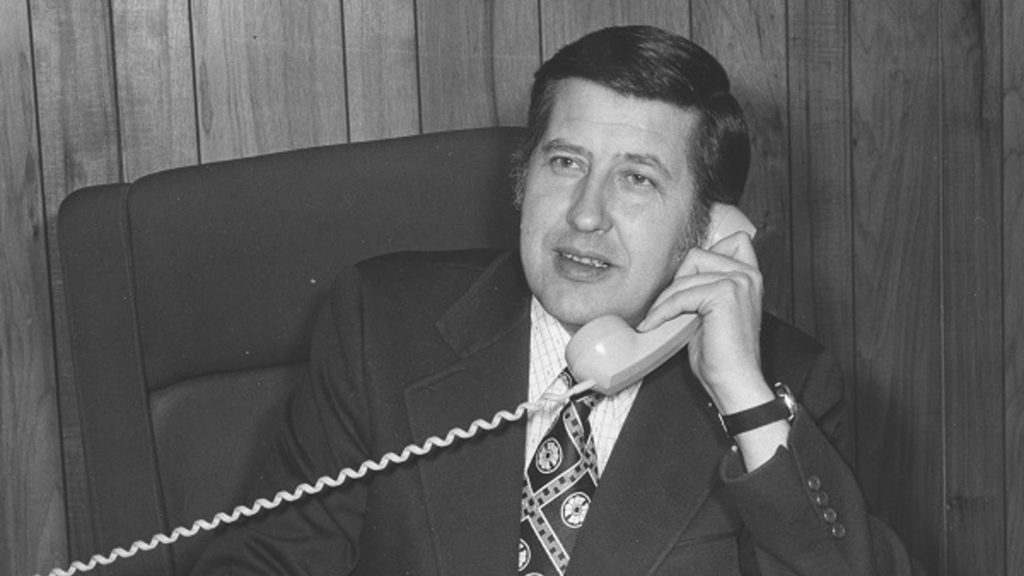
Photo: cp-6778 courtesy of Saskatoon Public Library

Photo: cp-6778 Courtesy of Saskatoon Public Library.

Photo: Star Phoenix-Photo by Richard Marjan
Anita Langford
- Anita Langford Park
Originally from Moose Jaw, Anita Langford came to Saskatoon to attend university. She settled here permanently in 1973 in Holiday Park. Her political life began with the Holiday Park Community Association and its fight to preserve the Saskatoon Sanatorium in the late 1980s. In 1994, she was elected to City Council in Ward Two and served two terms before leaving politics in 2000. One of her lasting achievements on Council was to help get the much-needed 22nd Street and Circle Drive interchange built. She also fought against slum landlords and was a prominent voice against poverty and the exploitation of children in Saskatoon’s inner city neighbourhoods.
C. Jack MacKenzie
- C. Jack MacKenzie Park
Chalmers “Jack” MacKenzie (1888-1984) studied civil engineering at Dalhousie and Harvard before coming to Saskatoon in 1910. Here he worked as a surveyor and building inspector before taking a teaching position at the University of Saskatchewan. He served in France during the First World War and in 1922 became the first Dean of the College of Engineering here, a post he held until 1945. MacKenzie served on Saskatoon’s City Council for one term, in 1929 -1930, before stepping down. He is best remembered for designing the Broadway Bridge, a Depression- era relief project. He also designed the “Ceepee” Bridge across the North Saskatchewan River at Borden. MacKenzie left Saskatoon in 1945 for Ottawa where he had a long, varied, and distinguished career, indicative of which is his appointment on July 6, 1967 as one of the first group of Companions of the newly-created Order of Canada. This is an honour reserved for those who have “demonstrated the highest degree of merit to Canada and humanity”. MacKenzie was also inducted to the Canadian Science and Engineering Hall of Fame in 2007.
Draggins Car Club
- Draggins Car Club Park
The Draggins Car Club was formed in 1957 by a small group of Saskatoon automobile enthusiasts, with a mandate to promote their hobby as a “safe and credible sport” and to support motorsports generally. The club held ice drags on Hudson Bay Slough in the winter of 1958-1959, and on April 1, 1961, held its first car show. This has become an annual event, held every Easter weekend. It is also one of the longest-running car shows in Western Canada. April 2019 is the club’s 59th show. Funds raised from the Annual Rod and Custom Draggins Car Show support charitable causes such as the Saskatchewan Abilities Council’s Camp Easter Seal. Draggins Club members also staff Salvation Army kettles at Christmas and bring their cars to community events throughout the year.
Paul Mostoway
- Paul Mostoway Dog Park
Paul Mostoway (1929-2012) was born in the town of Mayfair, Sk., and grew up in Guernsey and Saskatoon. In Saskatoon he attended St. Paul’s School and City Park Collegiate. After high school, he worked as a miner, a sailor, and a construction worker. He attended the University of Saskatchewan in the early 1950s, earning degrees in both arts and education. He was also a member of the Canadian Officer Training Corps and a 2nd Lieutenant in the Royal Canadian Armmoured Corps.
He began teaching in 1956 and taught in the towns of Allan and Clavet before retiring in 1988. Mostoway was an NDP MLA for Saskatoon Centre in the Blakeney government from 1971-1982. He served as Legislative Whip and chaired a special government committee on welfare and social services, before the Blakeney government was defeated in the 1982 general election. Mostoway was elected to City Council in 1988 and serve two, three-year terms, before stepping down in 1994. He was also a Catholic School Board Trustee from 1985-1994.
Lisa Rendall
- Rendall Park
Lisa Rendall (1965-2011) was an on-air personality at radio stations in Estevan, Regina, Toronto and Saskatoon. In Saskatoon she was the morning show co-host at C95. In 2000 she was diagnosed with metastatic breast cancer. She took her diagnosis public. In the fall of same year the station held the first “C95 Radio Marathon for Breast Cancer Research.” This became an annual event which, as of 2018, has raised more than $4.6 million for the Saskatchewan Cancer Agency. In 2001, Rendall started the “Lisa Rendall Golf Classic” to raise money for cancer research. As a public speaker, Lisa worked to educate people about cancer and the importance of research. She was an inspiration to women suffering from breast cancer. Among her other awards and accolades, Rendall was named YWCA Woman of Distinction in 2006 and CTV Saskatoon Citizen of the Year in 2010.
Rik Steernberg
- Rik Steernberg Park
Born in Vancouver, Rik Steernberg graduated from the Electronic Engineering Technologist program at STI (now Sask Polytech) in Moose Jaw and came to Saskatoon in 1978. His political life began on the Parkridge Community Association executive and other local boards before being elected to City Council in Ward 3, serving from 1994- 2003, when he stepped down. In 1999, Steernberg sought the provincial NDP nomination for Saskatoon Fairview. He ran unsuccessfully as a Liberal candidate in the same riding in a 2003 provincial by-election and again in the general provincial election held later that year. He also ran unsuccessfully for City Council in the 2011 Ward Three by-election.
Ernest Lindner
- Ernest Lindner School (Public)
The public school is named after Ernest Lindner. He may have been your teacher! Not only was he a long-time teacher with the Saskatoon Public School, he was also a nationally respected landscape artist. Born in 1897 in Austria, Lindner immigrated to Canada in 1926. He began teaching art at Saskatoon Technical Collegiate in 1931. In the mid-1930s, he was named head of the high school’s art department. His teaching and leadership influenced hundreds of students during a career that ran until 1962 when he left teaching to fully devote his time to his art. As a nationally recognized landscape artist his work was exhibited across Canada on many occasions during his life. Even today his work can be found in the National Gallery of Canada in Ottawa. Several of Lindner’s paintings are on display at the Saskatoon Board of Education office and in many schools.
A leader in the local art community, Lindner led the revitalization of the Saskatoon Art Association in 1932 and actively championed the creation of the Federation of Canadian Artists in 1941. Lindner is recognized, alongside Augustus Kenderdine, another familiar Saskatoon name, as influencing the University of Saskatchewan’s Artist Workshops at Emma Lake. These workshops attracted artists from Saskatchewan, Canada, and the United States. Lindner was a frequent participant during the 1950s and 1960s. Among his many accolades is an Honorary Doctor of Laws degree from the University of Saskatchewan, awarded in 1972, election to the Royal Canadian Academy of the Arts in 1977, recognition as a Member of the Order of Canada in 1979, and, finally, in 1988 a Lifetime Award for Excellence in the Arts from the Saskatchewan Arts Board. Ernest Lindner died in Saskatoon on Nov. 4, 1988, at the age of 91.
St. Lorenzo Ruiz
- St. Lorenzo Ruiz School (Catholic)
St. Lorenzo Ruiz is the namesake for the Catholic School in Hampton Village.
Lorenzo was born in Manila, in the Philippines, around 1600. Lorenzo had a Chinese father and a Filipino mother. During his youth, Lorenzo learned Spanish from the Dominican priests, for whom he served as altar boy and sacristan. He was exceptionally gifted with beautiful penmanship and became a professional calligrapher, earning the title of escribano—one who transcribes baptismal, confirmation and marriage documents into the Church’s official books. Lorenzo and his wife had three children, two sons and a daughter. Lorenzo was called by God to go to Japan to do mission work, so he journeyed to Japan to teach the people there about Jesus. He had not been in Japan very long when he was arrested. He was given a choice: deny his faith or face death. Even when he was tortured in very painful ways, he would not deny his faith, saying, “I will never do it. I am a Catholic and happy to die for God. If I have a thousand lives to offer, I will offer them to God.” September 28, 1636, is the day he was martyred for his faith. Lorenzo Ruiz is the first Filipino saint and the first Filipino to be martyred for his faith in Jesus.
Lorenzo Ruiz was beatified by Pope John Paul II during the Papal visit in Manila on February 18, 1981. He was canonized on October 18, 1987, in Rome. Lorenzo Ruiz’s feast day falls on September 28. St. Lorenzo Ruiz is the first and only patron saint of the Filipino community. According to the 2011 Canadian Census, Tagalog, the Filipino language, is the second most common mother tongue spoken in Hampton Village.
Acknowledgements
The information on this page was gathered by C. Baerg, with assistance from:
- J. O’Brien, City of Saskatoon Archivist
- Mary Ellen, Local History Room, Saskatoon Public Library
- Joanne Cliff, daughter of Johannes Pulles
Jane’s Walk
The Hampton Village Community Association was proud to participate in the 2022 “Jane’s Walk”. Although one of the newer areas in Saskatoon, the streets and parks in Hampton Village honor many of Saskatoon’s earliest families— names which you will still recognize. Come and walk with us and learn more about these Saskatonians on this ~ 4.5 km virtual (online) walk:
Jane Jacobs (1916-2006) was a writer, urbanist and activist who championed the voices of everyday people in neighbourhood planning and city-building. “Jane’s Walk” was founded in 2007 as a living, walking commemoration of Jane, her legacy and her influence. A “Jane’s Walk” is developed and lead by volunteers who want to celebrate the beauty they see in their community. These walks take place around the world on the first weekend in May, as close as possible to her birthdate on May 4th. Visit the Jane’s Walk website for more information: https://janeswalksaskatoon.ca/.
Jane Jacobs said: “No one can find what will work for our cities by looking at … suburban garden cities, manipulating scale models, or inventing dream cities. You’ve got to get out and walk.”


